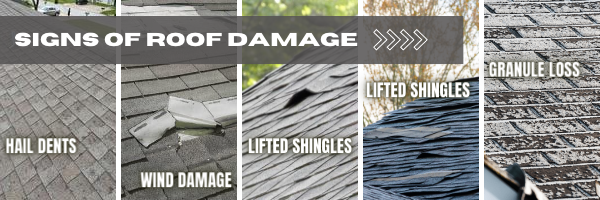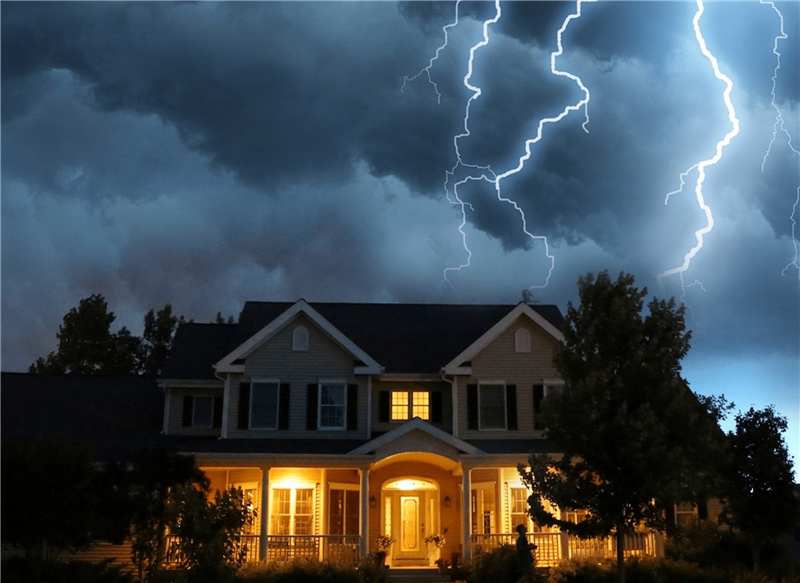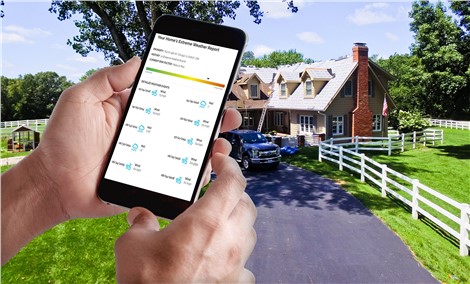
Severe storms, such as hailstorms and windstorms, can cause significant damage to roofs. As a homeowner, it's important to be aware of the signs of roof damage after a severe storm to prevent further damage and ensure the safety of your home. In this blog, we'll discuss the common signs of roof damage that you should look out for after a severe storm, as well as how to spot hail damage from the ground and at what size hail can damage a roof.
Signs of Roof Damage After a Severe Storm:
1. Missing or Damaged Shingles: High winds can lift shingles or cause them to crack, break or curl up. If you notice any missing or damaged shingles on your roof, it's important to get them replaced as soon as possible. Missing or damaged shingles can allow water to penetrate your roof, which can cause leaks and water damage inside your home.
2. Cracks or Holes in the Roof: Falling debris or heavy hailstones can cause cracks or holes in your roof. If you notice any cracks or holes in your roof, it's important to have them repaired immediately. Even small cracks or holes can allow water to seep into your roof and cause damage to your home's interior.
3. Water Stains on Ceilings or Walls: Water stains on your ceilings or walls are a telltale sign of roof damage. If you notice any water stains, it's likely that water has penetrated your roof and is leaking into your home. It's important to address water stains as soon as possible, as they can quickly lead to mold growth and further damage to your home.
4. Sagging or Buckling Roof: Structural damage caused by the weight of heavy debris, such as fallen trees or branches, can cause your roof to sag or buckle. If you notice any sagging or buckling, it's important to have an expert inspect your roof to assess the extent of the damage and determine the best course of action.
How to Spot Hail Damage from the Ground:
Hail damage can be difficult to spot from the ground, but there are a few signs to look out for:
1. Dents or Pockmarks: Hail can cause dents or pockmarks on your roof's shingles, which can be visible from the ground.
2. Granules in Gutters or on the Ground: Hail damage can cause the granules on your shingles to fall off, which can be visible in your gutters or on the ground around your home.
3. Cracks or Holes: Large hailstones can cause cracks or holes in your roof's shingles, which can be visible from the ground.
At What Size Hail Can Damage a Roof?
The size of hailstones needed to damage a roof varies depending on the type of roof material. Generally, hailstones larger than 1 inch in diameter can cause damage to asphalt shingle roofs, while much smaller hail can cause damage to clay tile or metal roofs. However, it's important to remember that even small hailstones can cause damage to your roof over time, particularly if they are accompanied by high winds.
In summary, severe storms, including hailstorms and windstorms, can cause significant damage to roofs. As a homeowner, it's important to be aware of the signs of roof damage after a severe storm to prevent further damage and ensure the safety of your home. If you suspect that your roof has been damaged by a recent storm.
Subscribe to Roofing Restoration Services of America (RRSA)'s Blog







Comments